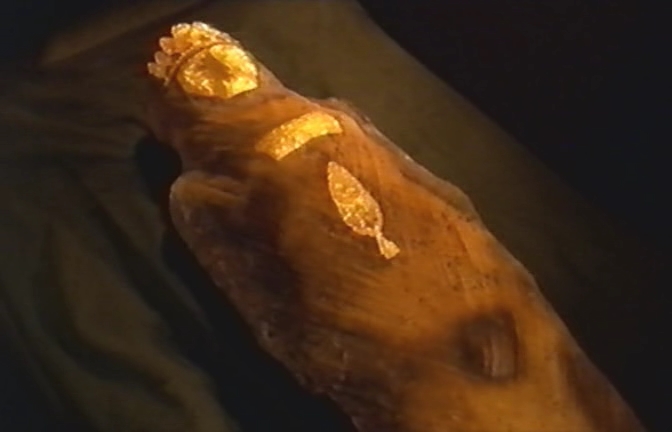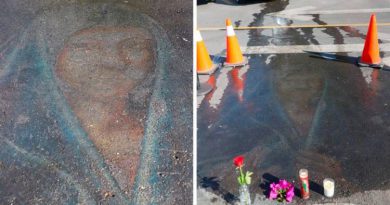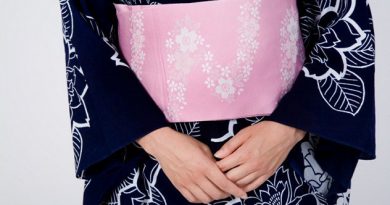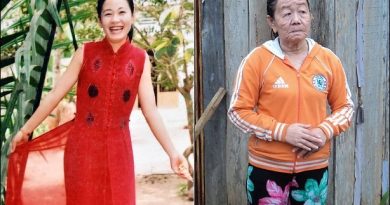Unique case of Fake Persian Princess Mummy
The Persian Princess or Persian Mummy is a mummy of an alleged Persian princess who surfaced in Pakistani Baluchistan in October 2000. After considerable attention and further investigation, the mummy proved to be an archaeological forgery and possibly a murder victim.
Discovered in a wooden sarcophagus in October 2000, the mummy was thought to be Persian and date to about 600BC. Iran laid claim to the sarcophagus and Pakistani provinces squabbled over it until tests showed the “mummy” was a fake only a few decades old. A charity has now agreed to perform the last rites and bury the body.
“No one is interested in it anymore,” Rizwan Edhi, a spokesman for the Edhi Foundation told the BBC news website. Mr Edhi said the charity had taken the decision to bury the fake mummy because it could no longer afford to keep it. “It has cost us hundreds of thousands of rupees over the past three years just to keep it in our mortuary,” Mr Edhi said.
He said the burial would take place after the local elections scheduled for this month and next. While the mummy was not as old as thought, it has managed to rustle up an interesting history in the five years since it was discovered.
Karachi police stumbled upon a video of the mummy in the course of a murder investigation into a man called Ali Akbar. On being quizzed about the video, Ali Akbar told police the mummy was with a Baloch tribesman in Quetta – the capital of Pakistan’s south-western Balochistan province, neighbouring Afghanistan.
Police raided the house of the tribesman, recovered the mummy and brought it to Karachi. They then contacted Pakistan’s most experienced archaeologist, Professor Ahmed Hasan Dani. Prof Dani said the cuneiform script on the gold plate indicated the mummy’s Persian roots. It may have been the daughter of ancient Persian King Xerxes, he said.
The Iranian Cultural Heritage Organisation immediately laid claim to the artefact – declaring it a part of Iran’s royal heritage. It threatened to mobilise Interpol to recover the mummy. The Taleban regime in Afghanistan also said it was interested in finding out if the mummy had been found in Afghanistan. Meanwhile, the Balochistan government accused Sindh province of stealing its archaeological treasures and demanded the mummy be returned to Quetta.
It was left to Archaeology magazine to suggest it was a fake that had been for sale on the black market for several months. Asma Ibrahim, the curator of the National Museum in Karachi, in an 11-page report, said: “After detailed studies, it is quite evident that this object is modern and a fake. A cut on the body over the region of the stomach looked like a wound. Dislocation or damage of the lower vertebrae could be the cause of death.” The jaw of the woman is also believed to be broken.
The “mummy”, encased in a gilded wooden coffin set in a stone sarcophagus, was found during a police raid on the home of a Baluchistan chieftain in Kharan, a town in the Pakistan desert bordering Iran, after a tip-off that antiquities were stored in his house. For several weeks the mummy had been stored in the basement, while a buyer on the black market was located.
Sardar Wali Reeki, the chieftain who had been trying to sell the mummy for £35 million, claimed that it was uncovered near Quetta after an earthquake in Baluchistan. He and his family have now been arrested and police are considering launching a murder investigation.
Police moved the “mummy” to the National Museum in Karachi, where curators were convinced that they had come across one of the most exciting archaeological finds ever made in Pakistan. On the mummy’s head was an exquisite gold crown embossed with seven cypress trees, the emblems of the ancient Persian capital of Hamadan. Gold ornaments in the coffin also suggested that the mummified body was of royal blood.
The find provoked a tug-of-war between Iran, Afghanistan’s ruling Taliban and Pakistan, all of whom laid claim to it. Experts from all over the world congregated by the “princess’s” bedside to argue their case for ownership.
One of those not convinced despite the excitement over the “mummy” was Prof Ahmad Dani, the director of the Institute of Asian Civilisations in Islamabad. He said: “It was quite clear from the beginning that she was fake. The inscription on her chest read: ‘I am the King of this Land’, in ancient hieroglyphics. Yet she was a woman.”
Prof Dani said that the wooden coffin was “not as old as her body” and, while the gold crown on her head looked genuine, her mask was relatively modern, “perhaps 100 years old”. Most revealing was the mat on which the body was resting. He said: “I would guess that the mat was five years old.”
He reported his findings to Ms Ibrahim. “She is a former student of mine. I reminded her that no mummy has ever been found in Afghanistan, Pakistan or Iran. It is not part of our tradition. Only the Egyptians preserved their dead in bandages.” He added that the words on the breastplate were copied from a statue of King Darius at Persepolis in central Iran that dated back to 486bc.
After visiting Karachi, Prof Dani flew back to Islamabad. “I believed that the mummy was of no historical importance. If it was real, it could only be Egyptian. If it was fake, then it wasn’t terribly well put together.”
Fate
The Edhi Foundation took custody of the body, and on August 5, 2005, announced that it was to be interred with proper burial rites. However, police and other government officials never responded to numerous requests, and it was not until 2008 that the foundation finally carried out the burial.



